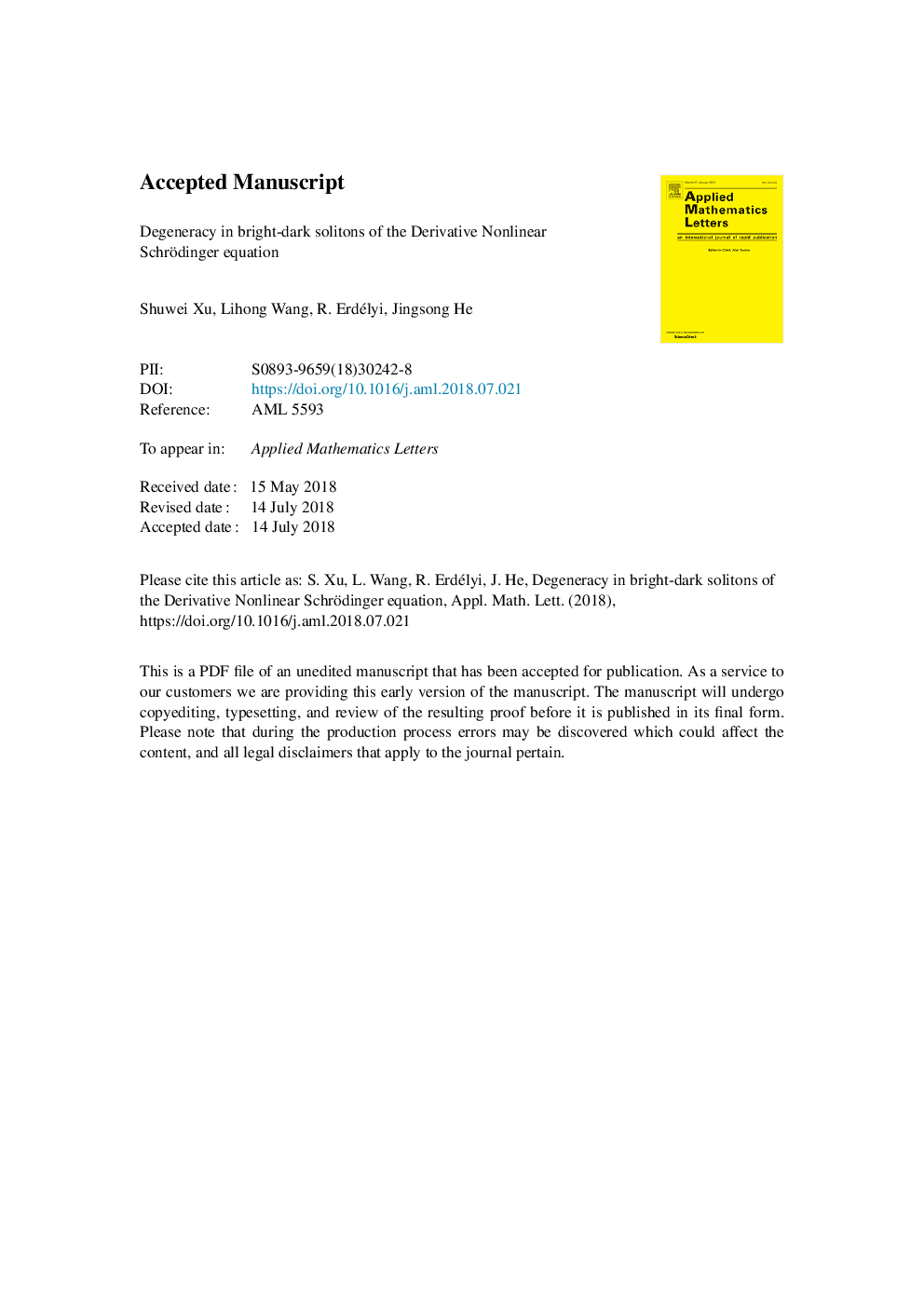| Article ID | Journal | Published Year | Pages | File Type |
|---|---|---|---|---|
| 8053207 | Applied Mathematics Letters | 2019 | 9 Pages |
Abstract
Bright-dark soliton interactions modelled by the Derivative Nonlinear Schrödinger (DNLS) equation are constructed from non-vanishing boundary conditions by the N-fold Darboux transformation. Adjusting the limitation λkâλc1(λc2), where λc1(λc2) is a critical eigenvalue associated with the synchronization of the relative phase of the bright-dark solitons in the interacting area, enables to obtain different types of quasi-rational solutions from the bright-dark solitons degeneration. Namely, quasi-rational bright and dark solitons, quasi-rational bright-dark solitons and rogue waves are found. Since a large number of preceding researchers have already addressed the relationship between the breather solutions and rogue waves, a more general modelling of rogue waves can be realized via the consideration of degeneration of bright-dark solitons. Hence, the phenomenon discussed here represents a novel nonlinear mechanism for the generation of rogue waves.
Related Topics
Physical Sciences and Engineering
Engineering
Computational Mechanics
Authors
Shuwei Xu, Lihong Wang, R. Erdélyi, Jingsong He,
